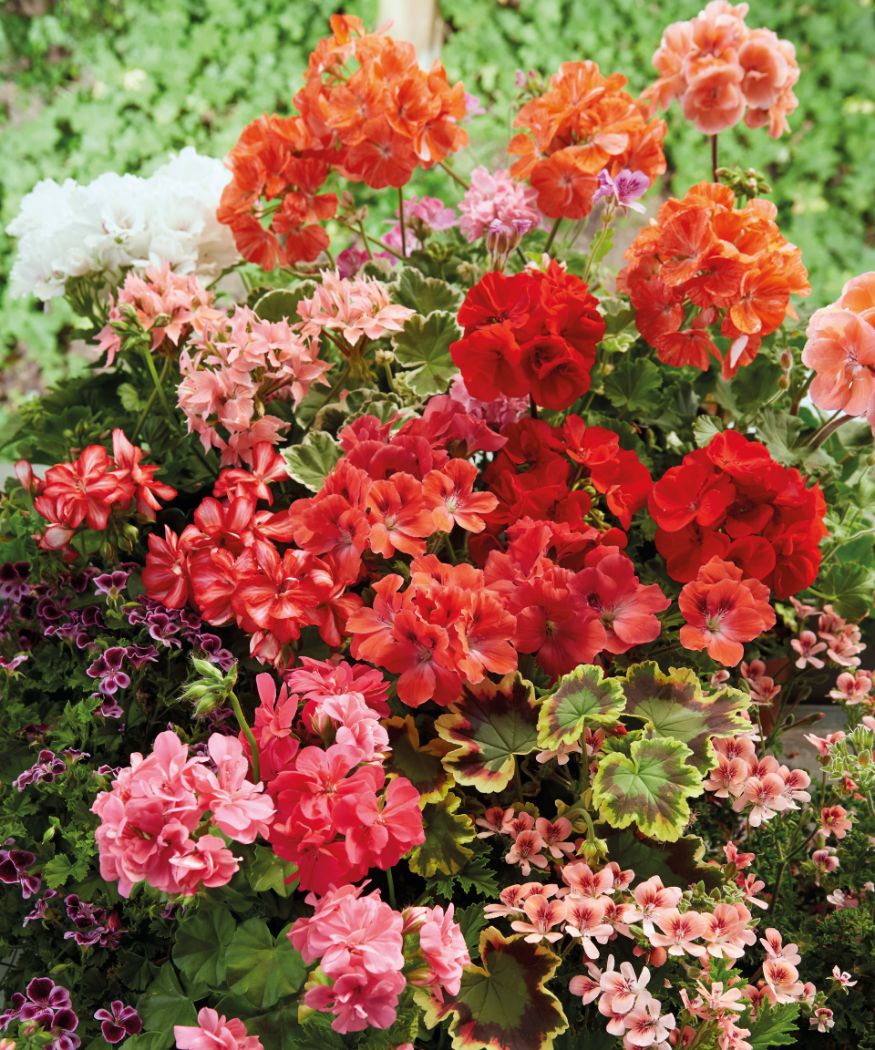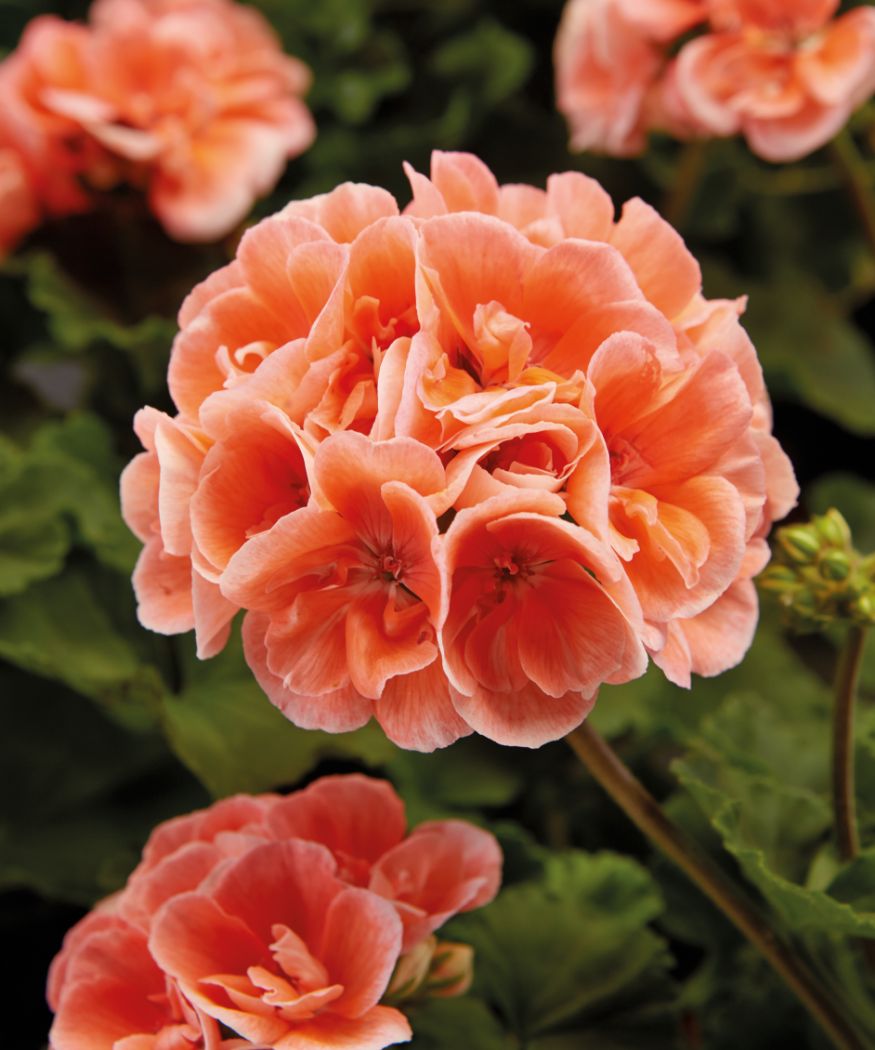The geranium is a low-maintenance plant. With its lush growth and abundant flowers, it gives even the most inexperienced amateur gardener a real sense of achievement, as long as a few simple rules are followed. The experts at Pelargonium for Europe share their knowledge of geranium care to make this beautiful South African plant bloom in all its glory from May to autumn.
Room to grow
Geraniums perform best when they can develop freely. Planters should therefore be at least 18cm high and, in planting combinations, the distance between neighbouring plants should be at least 20cm.
A place in the sun
Geraniums are sun worshippers. The more light they get, the more plentiful and intensely coloured their flowers. The ideal location is sun to semi-shade. Geraniums also tolerate full midday sun without issue. A north balcony, on the other hand, is not a suitable environment.
Tip: Geraniums grow towards the sun. If you want all-round beautiful plants, rotate potted geraniums 90 degrees every week so that they get enough light on all sides.
Water as a beauty treatment
The geranium originally comes from South Africa where longer periods of drought are not uncommon. Geraniums survive these by storing plenty of liquid in their fleshy leaves and thick-walled stems so a temporary lack of water doesn’t usually cause permanent damage. However, in order to bloom abundantly and continuously, geraniums need regular watering. On sunny days, water plants daily, preferably in the morning with water at ambient temperature, and preferably with stale water. On particularly hot days, a second watering in the evening will do no harm. It’s important that the soil neither dries out completely nor is completely soaked. To prevent waterlogging, make sure any excess water can run off.
Note: When it rains don’t just stop watering. Especially with lush plants, the foliage is sometimes so thick the rainwater doesn’t reach the ground at all. If you’re not sure, carefully poke a finger into the soil. If the soil feels dry further down, water it.
If you don’t want to water every day, choose a planters with a water reservoirs. A one-metre balcony box has a storage capacity of about 10 litres. A water level indicator shows the amount of water available.
An extra helping
As so-called ‘hungry’ plants, geraniums have a high nutrient requirement, so fertilising is essential for healthy, beautiful plants. If you use a high-quality, pre-fertilised potting compost, this will meet the plants’ needs for the first few weeks. After that, nutrients in the compost will be depleted and you’ll need to apply ore fertiliser. You can either enrich the water regularly with a commercial liquid fertiliser for flowering plants or geraniums, or use a suitable slow-release fertiliser. Specialist shops/garden centre sell products that will provide sufficient nutrients for up to nine months.
Tip: Coffee grounds are make a great low-cost, natural geranium fertiliser, as they contain just the right mixture of potassium, nitrogen and phosphorus. Either dissolve a small amount of coffee in water once a week – one tablespoon is enough for 10 litres of water – or dry the coffee grounds and carefully mix them into the soil around the roots of the plants.

Prune to stimulate flower formation
To allow geraniums to put all their energy into forming new flowers, regularly trim dead shoots and leaves. With semi-double and double varieties, pruning is more important than with single geraniums. If you don’t fancy pruning, there are also “self-cleaning“ varieties available. For more information and advice ask the professionals in specialist shops/garden centres.
Protect from frost
Geraniums are actually herbaceous perennials. But as they’re not frost-hardy, they are often treated as annuals for balconies at our latitudes. If you want to overwinter your geraniums, cut them back to a height of about 15cm before the first night frost and move them to a cool, light winter location. The ideal temperature is between 5-10 degrees. The plant hardly needs any water during the winter months, so it can look as if it has died. But with increased heat and water, it will sprout again in spring. At the beginning of the new season use fresh compost and repot the plant into a bigger container, if necessary.
 English
English Dansk
Dansk Deutsch
Deutsch English
English Español
Español Français
Français Hrvatski
Hrvatski Italiano
Italiano Magyar
Magyar Nederlands
Nederlands Norsk
Norsk Polski
Polski Română
Română Slovenský
Slovenský Slovenščina
Slovenščina Suomalainen
Suomalainen Svenska
Svenska Česky
Česky Ελληνική
Ελληνική Български
Български